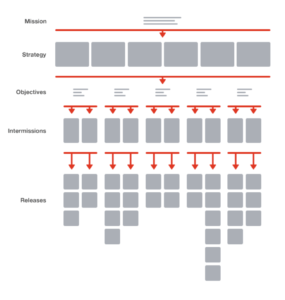Intercom: Reimaging customer service

Using technology to disrupt how companies scale
“Communicating with customers shouldn’t be hard.” [1] Irish startup Intercom is on a mission to improve communications between businesses and their customers.
Over the past decade, technology has enabled companies to scale more effectively. And scaling does not just mean reaching new customer markets across large territories, but being able to better service each customer throughout its lifecycle. Timely, effective, and robust customer support is an important ingredient in the success of any company. Brand supporters are more likely to be profitable overtime. [2] But creating and sustaining a solid customer support culture is challenging, and expensive. Hiring exponential headcount to match the growth of an organization’s customer base is difficult, and oftentimes not feasible. [3] Therefore, companies must be innovative in order to maintain service levels, in a resource constrained environment.
Economics aside, strong customer support is also just good for business. 95% of dissatisfied customers share these experiences with others. [4] In fact, research shows that it takes 12 positive experiences to compensate for 1 negative experience. [5] These dynamics have created an opportunity for companies like Intercom to build software that helps companies more efficiently complete their customer service goals, provide excellent service, and do so at scale.
One means for tackling this problem is by providing self-service solutions, such as videos and how-to articles. In fact, data shows that most customers tend to have similar questions. [6]
However, this is not enough, as a large and important segment requires more direct support. Aimed at this market, Intercom provides customer messaging products to assist customer interactions for sales, marketing, and customer support teams. [1] The company enables businesses to have a streamlined point of contact for all customer support. Through a suite of solutions, Intercom fosters communication and efficiency for a customer support team and enables seamless work. One of these solutions is its “Engage” product that synthesizes all inbound messages into one mailbox, providing the full team of customer support specialists with visibility to view responses, respond to inquiries, and collaborate and problem solve on challenging issues. One specific feature, for example, is “save reply,” which allows for shortened triage time by providing templates for common customer inquiries. [7]
Intercom has identified a business opportunity where its technology can disrupt the traditional customer support model, by reducing inefficiencies inherent in customer service, enabling companies to reduce their cost to servicing a customer. What makes Intercom unique is that it has diversified its portfolio to handle a wide range of customer communications, from support services to marketing activities. [8] By creating an array of products that enable customer conversations, Intercom has utilized technology to reduce the barriers for businesses to serve end-customers in a myriad of ways. Intercom’s ability to be successful in many areas, allows them to have a stickier customer base and build a brand based on technological innovation.
Intercom also stands out for its business model. Unlike other SaaS businesses, Intercom does not charge based on the number of internal users of the product, but instead levies a flat-fee based on audience size. [9] What makes this innovative is that it does not hinder Intercom’s own customers from optimizing their internal structure (i.e. number of employees per team, touch points per each customer). It also aligns the incentives of Intercom and its customers – when the businesses grow, attracting more customers and generating more revenue, both the underlying company and Intercom benefit. The strength of Intercom is evidenced by the quality of customers it has attracted, including Expensify, Chariot, and General Assembly, and the $166MM in funding it has raised. [1,10]
How does Intercom accomplish this? It uses a guide of operating principles to build its business. Intercom promotes short timelines and builds detailed roadmaps for its product launches. It uses specific frameworks for decision making and focuses on accountability and transparency throughout its operational processes. [11]
Example Roadmap.
Despite this progress, there is still more to be done. Intercom can continue to make its own customer relationships stickier, by building out a robust analytics platform that helps companies to understand their customer service problems. By educating companies on customer touchpoints, Intercom can enable smarter customer support decisions and resource allocation. Intercom would also be able to aggregate all customer data to provide best practice recommendations for its users. Another opportunity for Intercom is to move beyond its monthly pricing mechanism. If Intercom were to introduce contracts, it could not only increase its own user retention, but also create a predicable stream of returning revenue. These additional features would help to increase Intercom’s credibility as a business, allowing it to better serve its customers and create more value in the marketplace with its customer service software.
[Word Count: 783 words]
Cited Sources:
[1] Intercom, accessed 11 November 2016, https://www.intercom.com/
[2] “15 Surprising Customer Service Statistics That Will Change The Way You Do Support,” (22 September 2015), accessed 11 November 2016, https://www.groovehq.com/support/customer-service-statistics
[3] “The 3 Deadliest Challenges of Scaling a Startup,” (27 March 2014), accessed 13 November 2016, https://www.groovehq.com/blog/scaling
[4] “The Big List of 43+ Customer Experience Statistics,” (2015 1 April), accessed 11 November 2016, https://www.sprinklr.com/the-way/big-list-customer-experience-statistics/
[5] “75 Customer Service Facts, Quotes & Statistics,” HelpScout, accessed 11 November 2016, https://www.helpscout.net/75-customer-service-facts-quotes-statistics/
[6] “How to Scale Customer Service When You Can’t Hire More People,” AnswerDash (3 February 2015), accessed 15 November 2016, http://www.answerdash.com/blog/how-to-scale-customer-service
[7] Intercom, accessed 15 November 2016, https://www.intercom.com/customer-support?
[8] “Founders of Slack, Stripe Back Startup Intercom,” Fortune (7 April 2016), accessed 13 November 2016, http://fortune.com/2016/04/07/intercom-help-desk-startup/
[9] Intercom, accessed 15 November 2016, https://www.intercom.com/pricing?product_store_location=-store-add_bundle-count-undefined
[10] Crunchbase: Intercom, accessed 17 November 2016, https://www.crunchbase.com/organization/intercom#/entity
[11] “Lessons Learned From Scaling A Product Team,” Paul Adams, accessed 17 November 2016, https://blog.intercom.com/how-we-build-software/
Other sources referenced:
“Introducing the Customer Service Scaling Timeline,” UserVoice Blog, accessed 16 November 2016, https://community.uservoice.com/blog/customer-service-scaling-timeline/
Title Image: https://twitter.com/intercom





Very interesting article about a very interesting space. I wonder what machine learning and artificial intelligence steps Intercom is taking. Ultimately I feel the winner in this space would be someone that masters the machine learning aspect. For instance there is a similar startup in India that creates chat channels with representatives from companies. The idea was to initially collect data on the way the customer interacts with representatives and then pivot to move away from representatives and towards artificial intelligence.